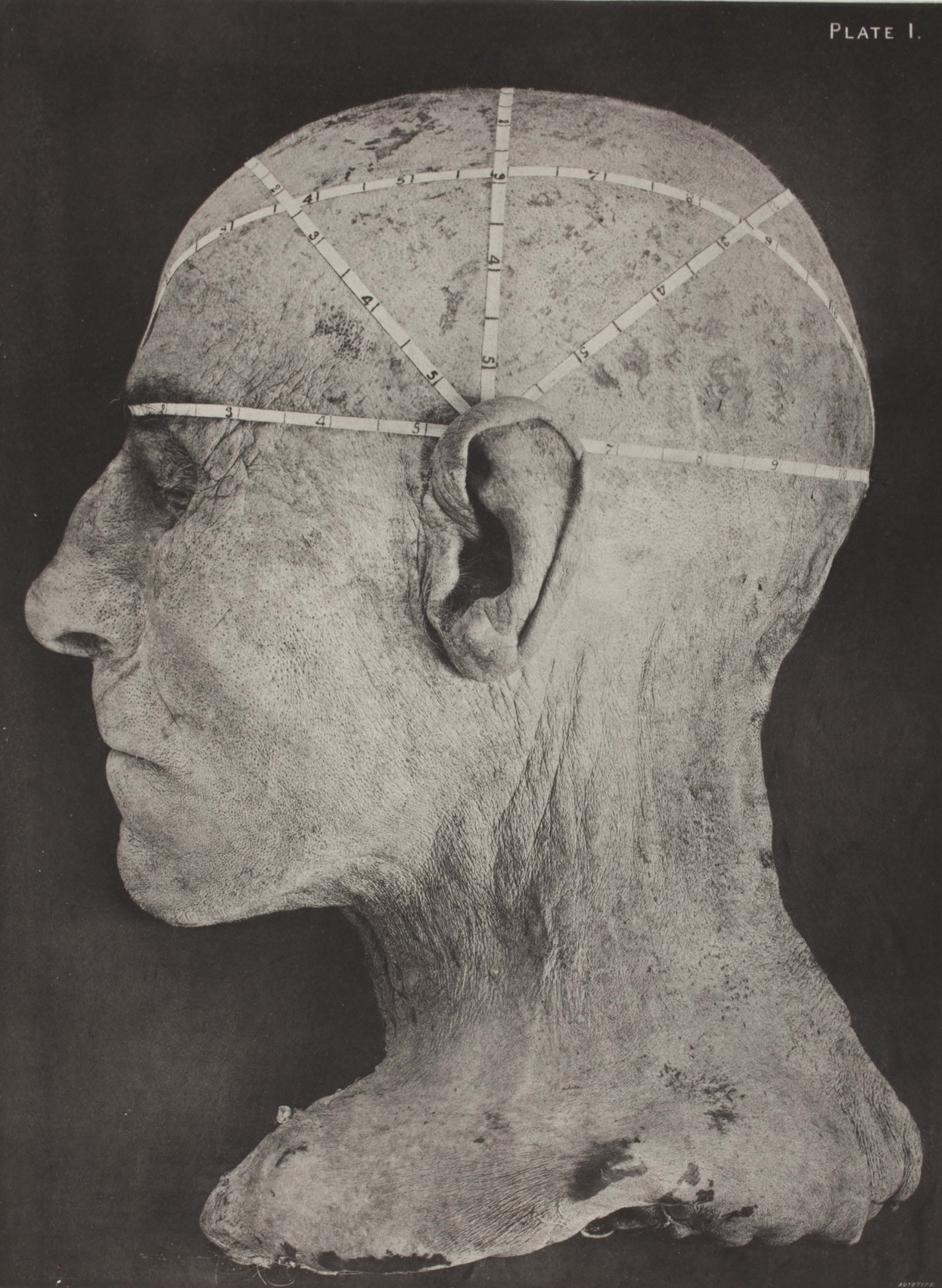
The only thing we don’t know in this brilliantly illustrated work is the names of the people who once lived inside these heads. Perhaps that’s for the best. What we get is the result of Alec Fraser’s dedication to anatomy. “This book is the first portion of a work upon which I have been engaged for the last six years,” he writes in the introduction, “the time has mainly been spent in perfecting the method of illustration.”
His argues that photography is the way ahead, as did Ransford E. Van Gieson in an 1860 issue of the New York Medical Journal, when he argued that “No science or art not strictly medical…will more richly repay the scientific physician”.
The expense of reproduction is as yet the great drawback to its more general adoption, especially in the case of those who, like myself, have but limited resources ; but the recent advances in photo-mechanical methods are of such promise that the worker may live in hope that the reproduction of his negatives will soon cost as little as that of crude and unsatisfactory line drawings.
Each image in the book is to be viewed in order as a series. Fraser slices into the human head layer by layer.
When I first began to make serial dissections it was essential for me to know whether the head always occupied the same position when it was replaced in its mould. In order to make sure of this I laid aside a double back with two plates, exposing each of them for the skin view, then again each of them for three or four different serial views, such as the external or median surface of the brain, for as many dissections as I thought would be a sufficient test for determining the object mentioned above, giving to each view a fourth or fifth of the exposure necessary for the making of a single serial negative.
I was highly pleased to find, not only that the heads after their return to their mould always occupied the same position, but also that I had here a fertile means of showing the relations of the deeper parts to the skin surface.
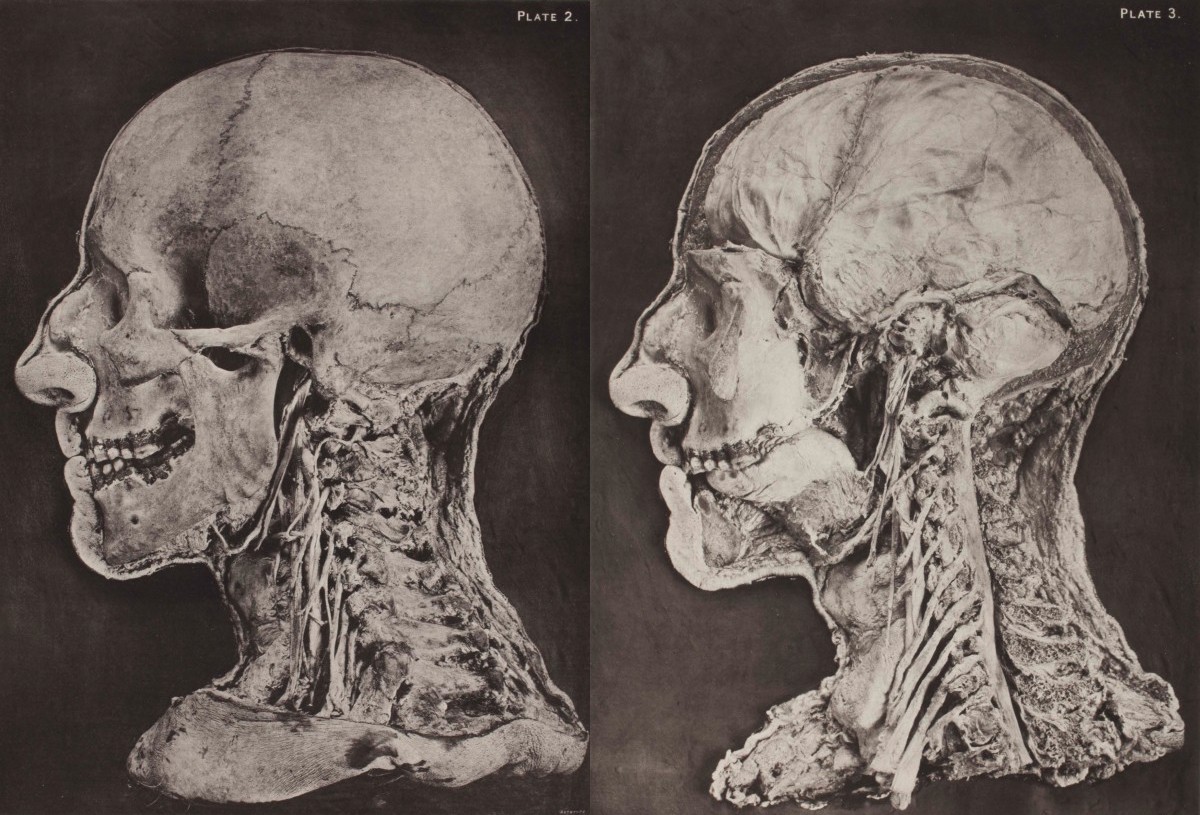
The plates were exhibited in England a year before the book came out. He took the time between to make them better, working to the idea being that the image was al -: “The Text which accompanies the Plates may be considered as superfluous. The anatomy is objective, and can be read by anyone who may use this book.”
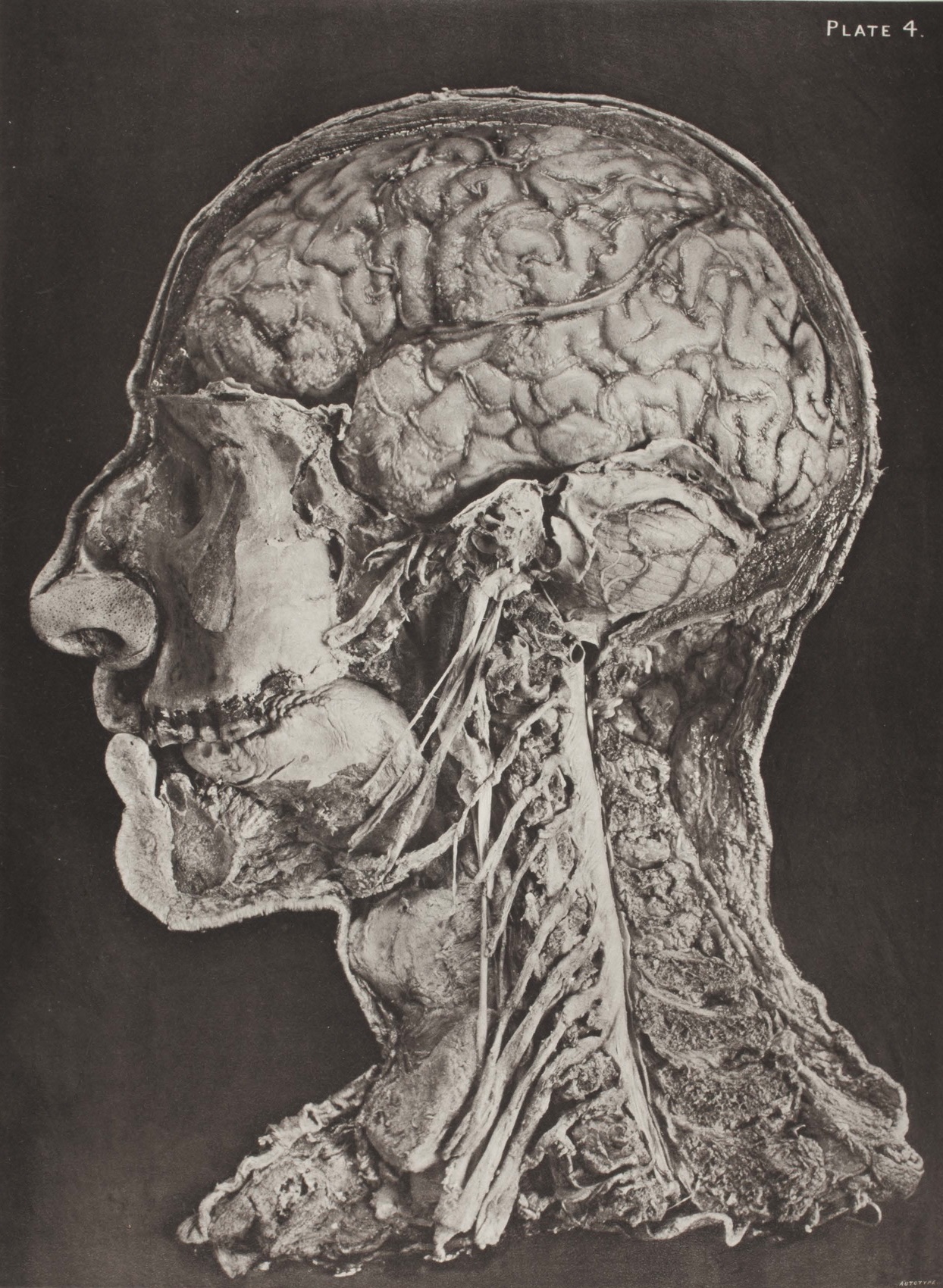
He then explains how he did it.
Preparation of the Heads
The bodies, as soon as possible after death, are injected from the heart with an alcoholic solution of corrosive sublimate prepared as follows:—
Corrosive sublimate – 80 grammes
Methylated alcohol – 4 litres
Nitric or hydrochloric acid – 25 cubic centimetres
After the lapse of twenty-four hours another litre of the fluid may be injected, after which the injection is complete. To obtain the best results, it is necessary that the injection be made from the heart. I have prepared the heads, after their removal from the trunk, by injecting from the carotids and vertebrals.
I have also – for the purpose of saving the thoracic cavity – injected the body from the femoral artery; but by both methods I have lost every head so prepared. The first series of heads was prepared with a solution of chloride of zinc, but in my hands the solution always caused too great a contraction of the brain, so that they had to be rejected.
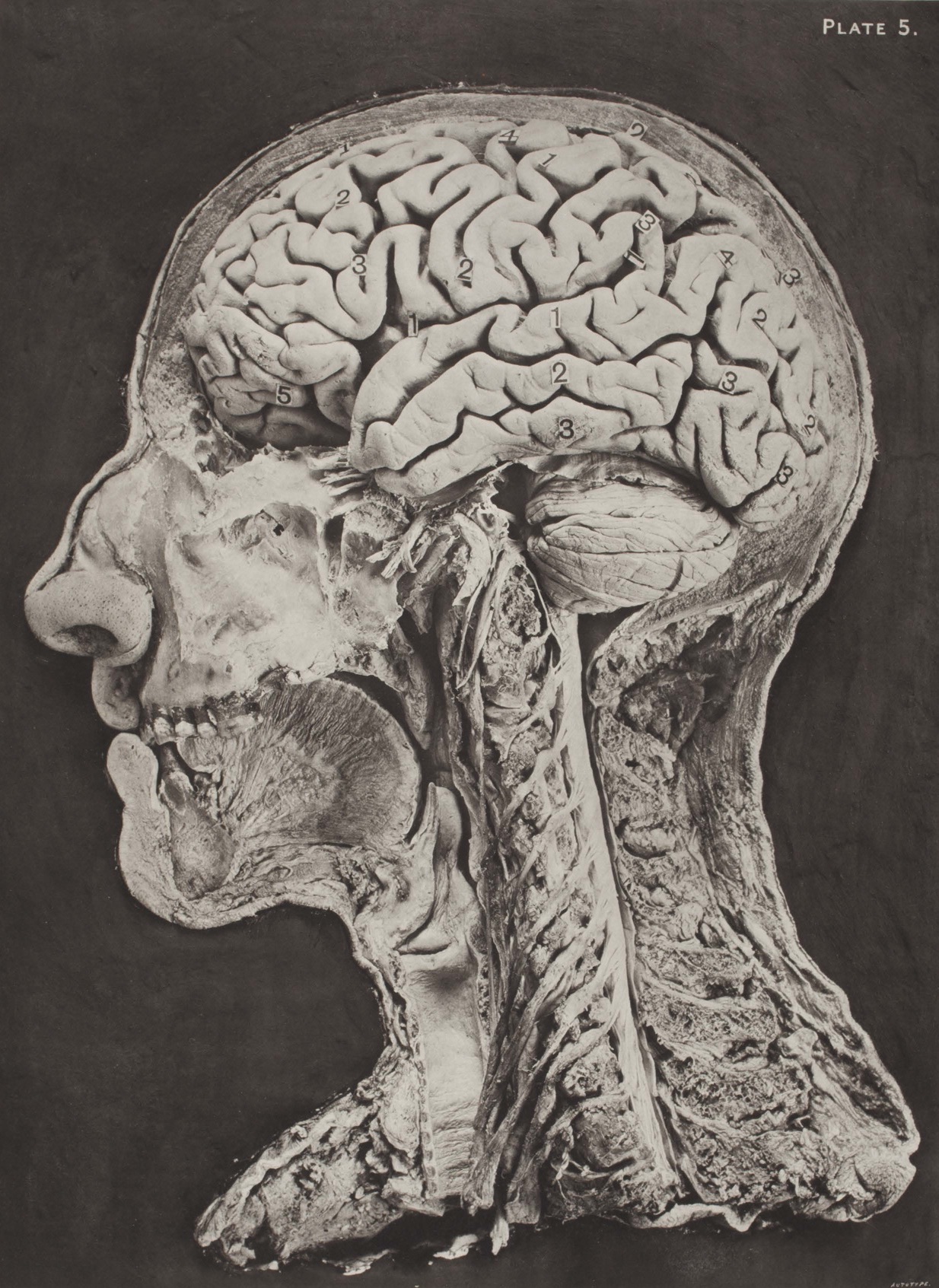
After the second injection of the sublimate solution, the head and neck can be removed from the trunk by making an anterior skin incision from shoulder to shoulder, curving downwards over the chest-wall, several inches below the interclavicular notch, turning the skin upwards, sawing the manubrium between the first and second ribs, and the two clavicles at their acromial ends; then with the knife cut through the soft parts along the curve of the first intercostal space, separating the large vessels from the arch of the aorta, dividing also the trachea and the oesophagus, and sawing through the bodies of the second or third dorsal vertebras; then finally divide the remaining soft parts, taking away as much skin behind as will, along with the anterior flap, cover in the cut surface.
The head after removal is placed in spirit for eight or ten days – the spirit being changed from time to time, when the hardening will be complete externally.
The head is then shaved, and the anterior and posterior flaps of skin neatly stitched over the cut surface, when it is ready for embedding; but, as this is done wfith reference to the tapes, I shall here describe the manner in which these are placed on the cranial vault.
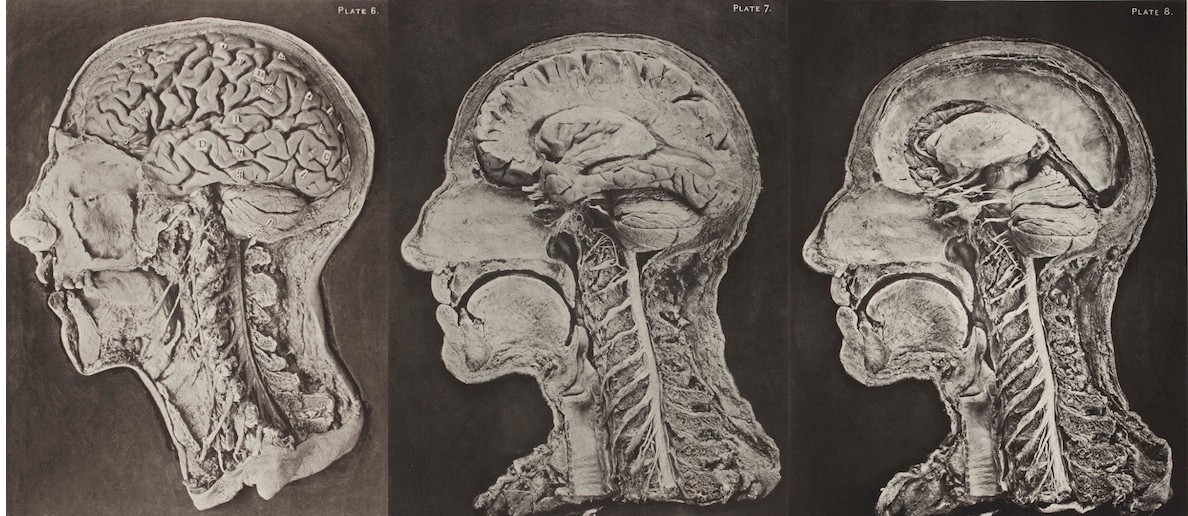
Fixing the Tapes
The tapes were hand-made, and divided into inches and half-inches. I am conscious of the drawback which the adoption of these measurements entails, but it is not insuperable, as they can readily enough be turned into centimetres.
The primary tape, with which all the others are connected, is the circumferential, passing horizontally round the vault of the head, from the root of the nose, between the eyebrows in front (glabella), to the maximum occipital point behind (should there be any difficulty in locating this latter point, take it as one inch above the external occipital protuberance), and thence round to the starting-point.
This tape, giving the circumferential measurement of the head, is then divided into four equal parts; if it is, say, 23 inches, then the subdivisions will be marked at 5, 11, and 17 inches; the starting-point and the ll inches are to be the poles where all the tapes running longitudinally are to meet; while the 5 and the 17 inches arc to be the meeting-points of the tapes running transversely.
Practically I place these on the heads as follows. I do not start with running a tack through the beginning of the first inch of the circumferential tape alone, but, in addition, through all those that are to run in a longitudinal direction—that is, three if I am making the series of dissections from the top, the back, or the front of the head and neck, or two if I am working from the side. I drive this tack, with these three or four tapes on it, through the scalp into the frontal bone at the point previously mentioned; then I run the circumferential tape laterally round the vault, passing over the posterior fixed point as also previously mentioned, and secure this tape by driving a second tack through it into the frontal bone at the starting-point; then I take the other three (or two) tapes and run one of them along the median longitudinal line of the head from front to back, and the remaining two (or one) laterally, so as to divide each lateral half of the median transverse tape into two equal parts, the three (or two) longitudinal tapes being finally fixed by driving a tack through them, and the centre of the circumferential tape into the scalp and the occipital bone behind.
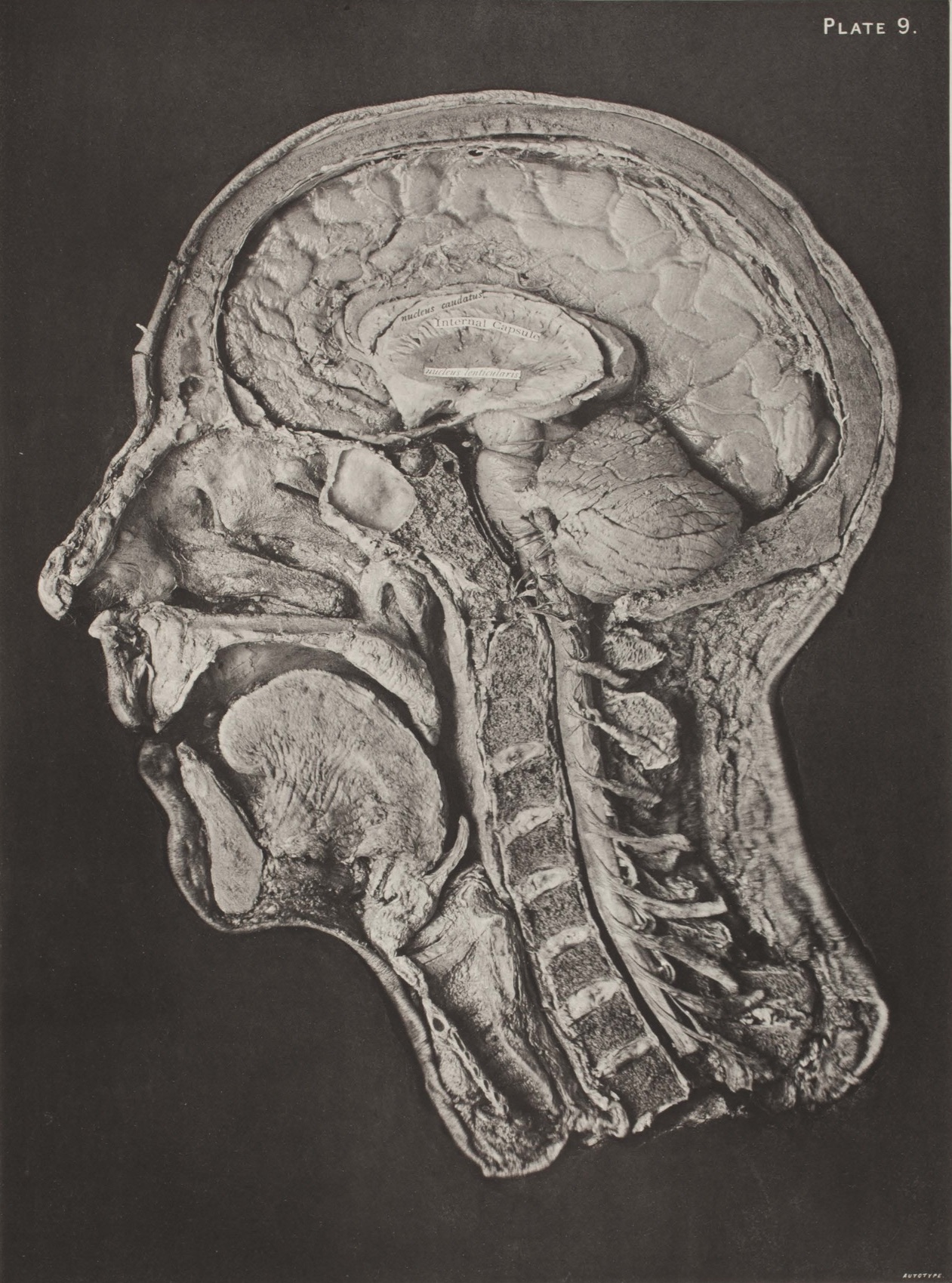
Embedding in Plaster of Paris
For this purpose five or six boxes are required, two feet long, eighteen inches wide, and seven inches deep. The head is placed in one of these, and embedded in the plaster up to the level of the tape corresponding to the series to be made. If this be the side series, up to the median longitudinal; if the top series, up to the circumferential one; if the front or back series, up to the median transverse; if the side oblique series, up to the right lateral longitudinal; and if it be the posterior top oblique series, up to the anterior transverse tape. The lower half of the preparation, before being placed in the box, is to be lubricated with oil; the plaster is then poured in roughly up to the levels before mentioned and allowed to set.
The head is then removed, washed, and replaced in spirit. After an interval, which may vary according to convenience, the head is again replaced in its rough mould and accurately embedded. This can be repeated several times, until finally the head and its mould fit so accurately that it can be removed and replaced at will, without the slightest change in its position occurring during the progress of the serial dissections. After the accurate embedding is accomplished, the surface of the plaster inside the box, external to the preparation, is planed and levelled as far as the lower border of the tape; this surface is then blackened by several applications of a solution of lamp-black in turpentine. A new set of tapes is accurately adjusted on the vault of the head, and the box and preparation in it are then ready for the copying apparatus.
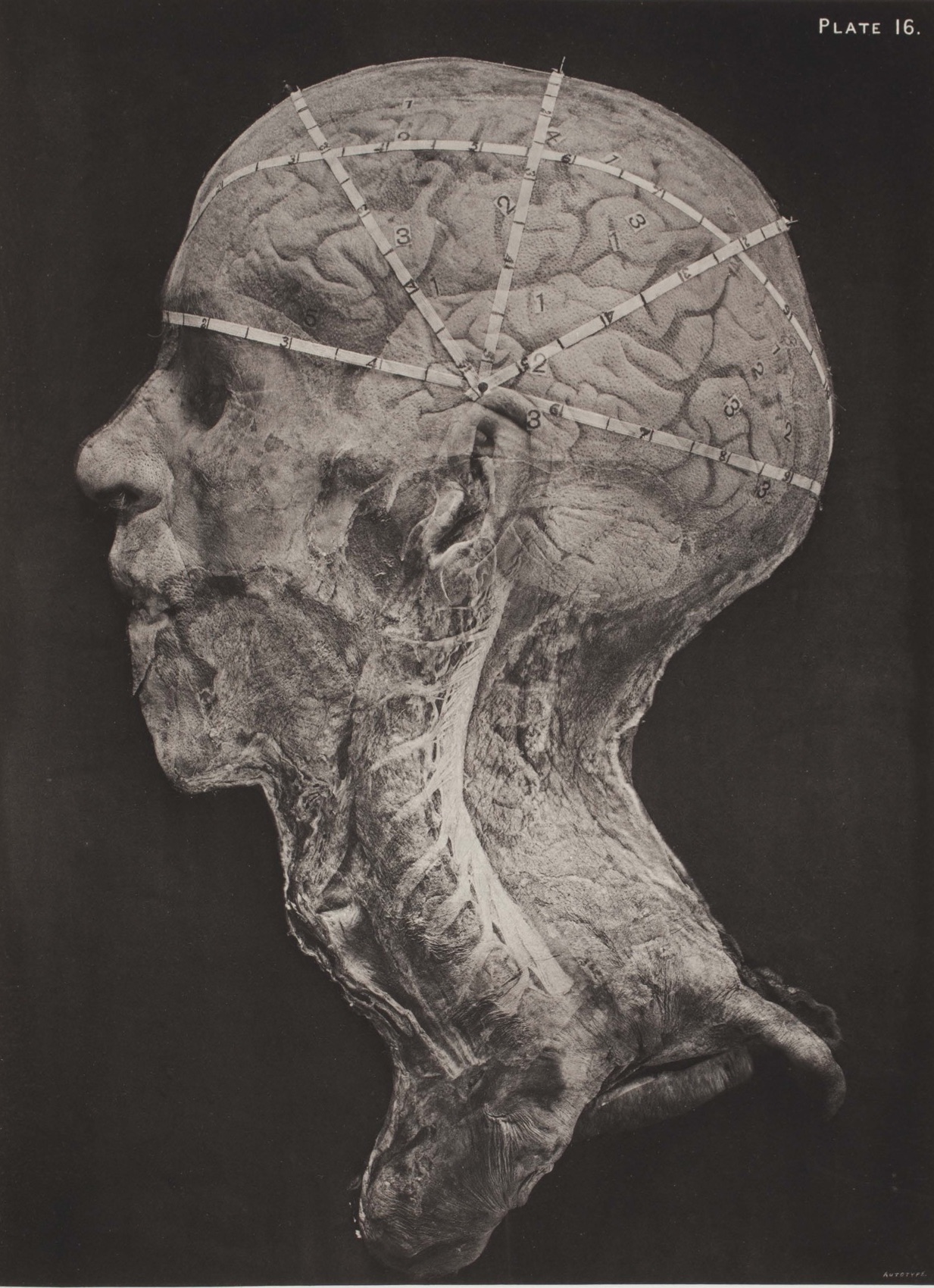

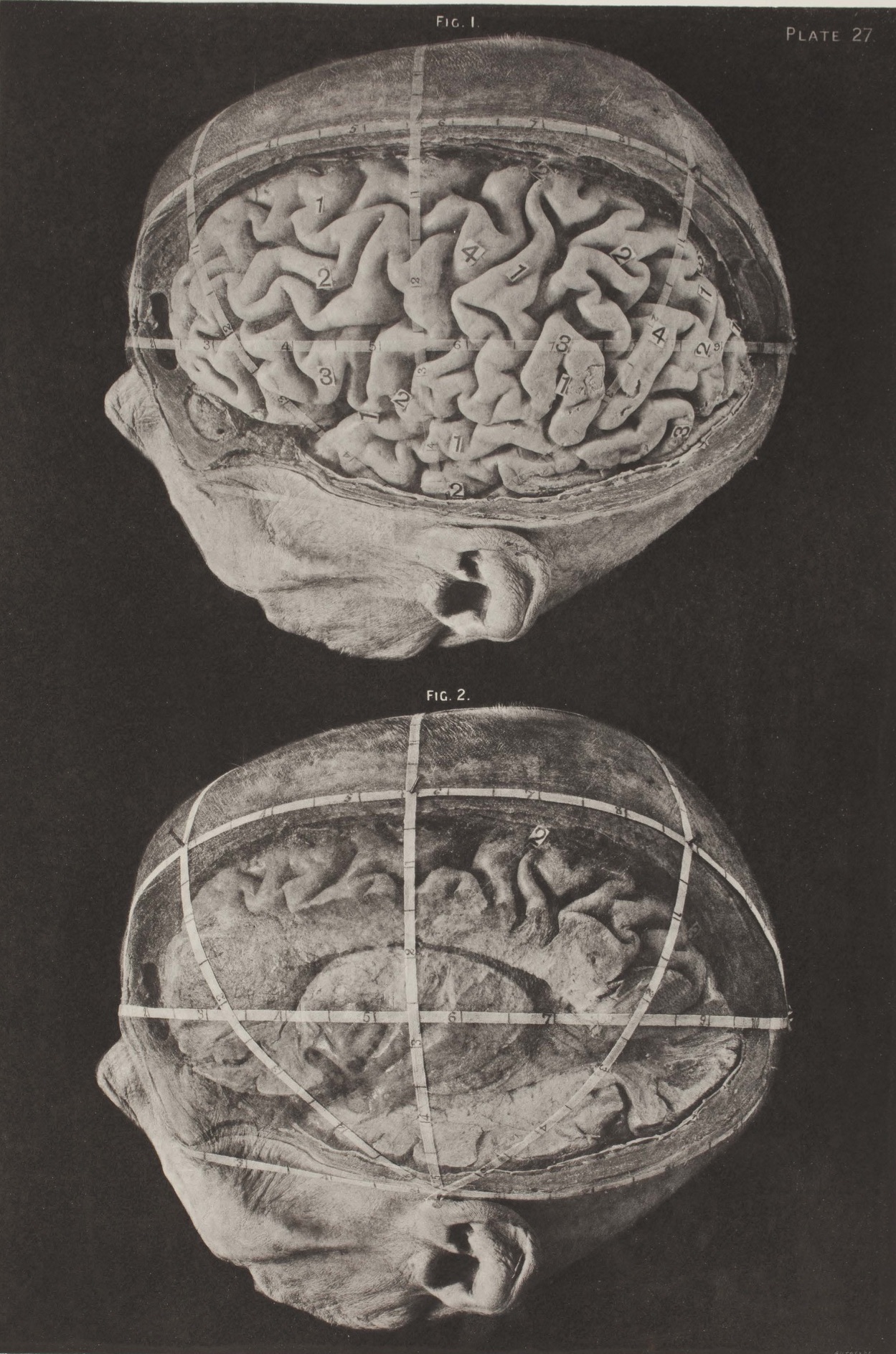
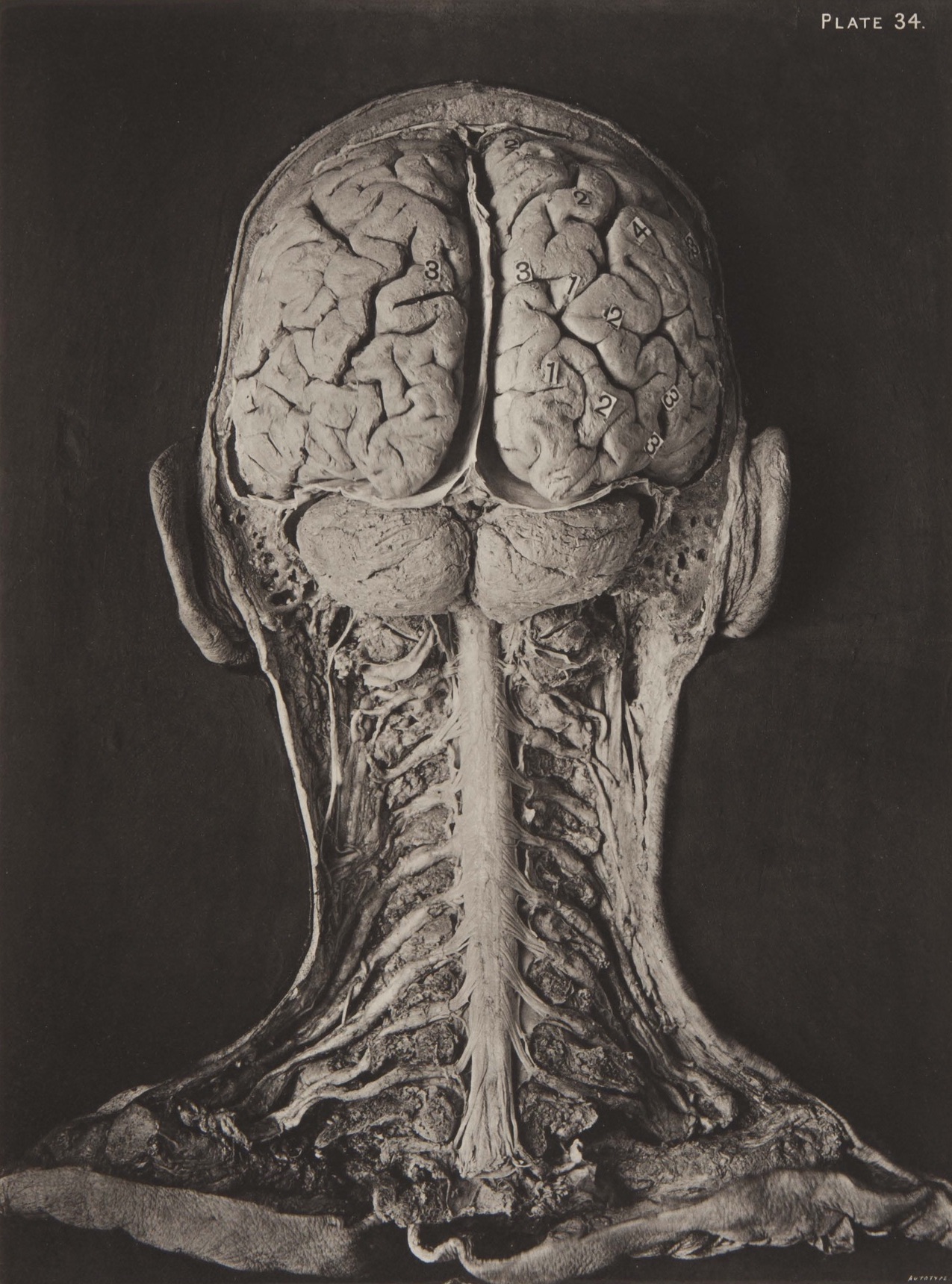

Via: Harvey Cushing/John Hay Whitney Medical Library
Would you like to support Flashbak?
Please consider making a donation to our site. We don't want to rely on ads to bring you the best of visual culture. You can also support us by signing up to our Mailing List. And you can also follow us on Facebook, Instagram and Twitter. For great art and culture delivered to your door, visit our shop.



